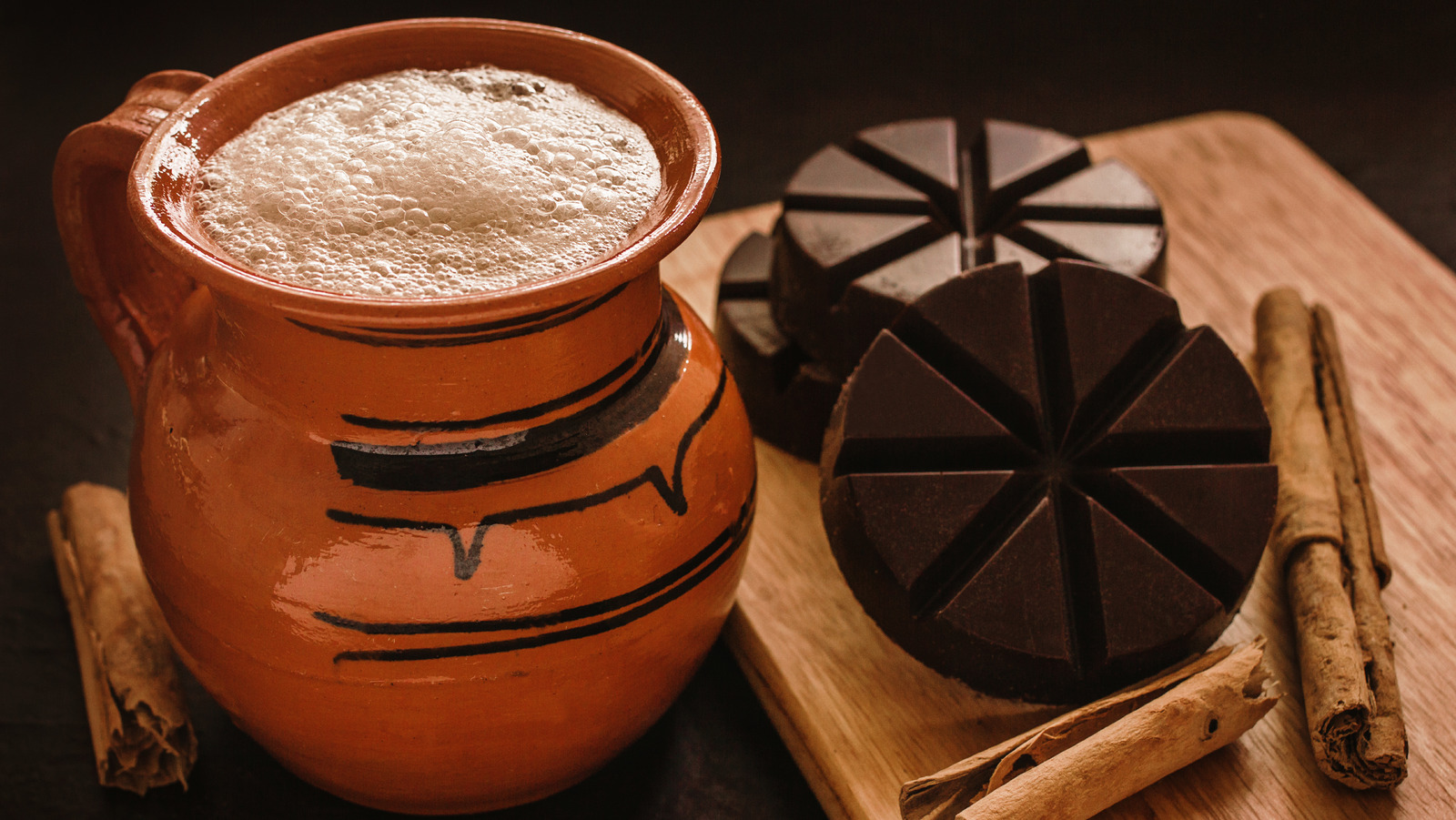
Most often found in round packaging and wrapped up in individual discs, Mexican chocolate has gradually become more prevalent in American markets. Upon unwrapping a disc, one finds a solid piece of what looks like chocolate but is generously studded with sugar crystals and contains shallow indentations all around, which direct consumers on where to cut into the disc.
According to Eater, the process to make this culinary curiosity begins with the cacao fruit. Native to Mexico, a cacao fruit resembles an American football. Harvested by hand, each fruit contains anywhere from 30 to 60 seeds which are coated in a white, pulp-like fruit. The seeds are removed and left to ferment anywhere from two to nine days after which they are sun-dried and finally shipped to chocolate makers and factories.
At this point, the dried beans are shelled to retrieve what is called "cacao nibs," or the element that is ground and made into chocolate. They are completely unsweetened but, when consumed, feature the unmistakable nuances of dark chocolate, per Isabel Eats. The ground nibs are made into a paste and combined with sugar, cinnamon, and often other flavorings, but are not mixed with cocoa butter, which is what makes chocolate creamy. The paste is then cooled and molded into a distinctive disc shape, ready to be enjoyed.
Mexican Chocolate Discs Are The Ingredient Your Pantry Is Missing - Tasting Table
Read More

No comments:
Post a Comment